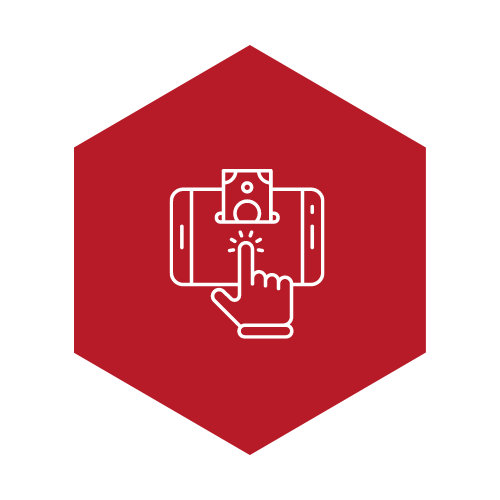Many businesses and industries use 3D printing worldwide to make finished products. For example, 3D printing creates prosthetic limbs for patients, allowing them to move comfortably. In fact, 3D printing could be the best and most cost-effective way to make your ideas come to life.
There are many 3D printers available in the market today, and choosing the one you need can be challenging. Fortunately, this article will discuss the different types of 3D printers, how they function, and their ideal applications.
Different Types of 3D Printers and Their Uses
1. Fused Deposition Modeling (FDM)

Fused filament manufacturing or fused deposition modeling (FDM) is the most common 3D printer. It’s an efficient piece of equipment for producing product models.
FDM 3D printers work by melting thermoplastic filaments such as Acrylonitrile Butadiene Styrene (ABS) or Polylactic Acid (PLA) and placing them on a building platform by layering. To use this printer, put down one layer at a time to finish one portion.
The standard FDM 3D printers push PLA or ABS plastic threads out of a heated nozzle. Then, the plastic material will melt and apply, building a platform in layers. After that, the pieces will assemble by layering them one after another.
Ideal Uses and Applications:
- Prototypes for basic concepts
- Mechanical system modeling
2. Stereolithography (SLA)

SLA 3D printers use a laser to harden liquid resin in a process called photopolymerization. These printers are known for creating precise, uniform, and watertight prototypes and parts with fine details and smooth surfaces.
The diverse SLA resin formulations match the optical, mechanical, and thermal properties of various thermoplastics. Resin 3D printing, especially with SLA, is ideal for detailed prototypes like molds, patterns, and functional parts.
Ideal Uses and Applications:
- Rapid prototyping
- Functional prototyping
- Dental applications
- Jewelry prototyping and casting
3. Selective Laser Sintering (SLS)

A strong laser in an SLS 3D printer hardens the tiny pieces of polymer powder. This unfused powder allows you to produce 3D printer files easily using SLS without specific support structures.
Due to this, SLS is perfect for very complicated geometries. For example, those with inner features, undercuts, thin walls, or negative features work well with SLS. The mechanical properties of SLS-printed items are second to none. Also, their strength is comparable to that of injection-molded components.
Ideal Uses and Applications:
- Custom, bridge, or short-run manufacturing
- End-use parts
- Functional prototyping
4. Digital Light Process (DLP)

Digital Light Processing, or DLP, is a 3D printing process that can make photopolymer components quickly. It's a lot like SLA. The key difference is that DLP machines simultaneously use a projected light source to cure the whole layer. This process opposes the SLA machines using a laser to trace a layer. Then, the component is built layer by layer.
Things with precise features, such as dental molds, sculptures, jewelry, and toys, can be printed using DLP technology. Also, the DLP 3D printer cures the whole layer simultaneously, making it significantly faster than SLA.
Ideal Uses and Applications:
- Adornments
- Amplifiers
- Dental Applications
- Infuse shape type, polymer models
5. Direct Metal Laser Sintering (DMLS)

You can use a DMLS 3D printer to build a part one layer at a time. A computer-aided design (CAD) file tells this method where to put a laser beam on a powder bed.
After producing each layer, the machine applies additional powder to the part, repeating the process. This printing method excels at producing high-resolution components with intricate geometries.
DMLS machines also cut the need for actual molds using a laser to heat the particulate matter to its melting point. The finished goods are accurate. Also, you will notice that the 3D design has a high-quality surface and mechanical properties like wrought iron.
Ideal Uses and Applications:
- Create metal parts with complex geometries
- Copy 3D design with an organic structure
6. Electron Beam Melting (EBM)

The EBM printer uses a CAD model that shows the materials' exact size, shape, and properties. A magnetic field guides an electron beam, which melts powdered metal one layer at a time.
Then, a vacuum chamber will prevent oxidation from damaging high-reactivity materials during printing. Like DMLS, EBM prints from the 3D printer's powder bed, but instead of a laser, it employs an electron beam.
Overall, EBM creates high-strength products that maximize metal properties. This printer can also eliminate impurities from casting or other production methods.
Ideal Uses and Applications:
- Print components for aerospace, automotive, and medical applications
- Proof-of-concept verification
- Small-batch manufacturing
7. Multi Jet Fusion (MJF)

The Multi Jet Fusion 3D printer makes useful parts with nylon powder, just like SLS. A bed of nylon powder is treated with fusing chemicals using an inkjet array by MJF instead of a laser. After that, the layers are fused by passing a hot device across the bed.
This process produces better surface quality and more consistent mechanical characteristics than SLS. The shortened build time that results in reduced production costs is another advantage of the MJF technology.
Ideal Uses and Applications:
- End-use parts
- Isotropic mechanical properties
- Manufacture functional prototypes
- Organic and complex geometries
8. PolyJet

There's a new spin on the 3D printing process using PolyJet, which uses plastic. Parts with various attributes, like colors and materials, can be manufactured by this 3D printer. Elastomeric or over-molded components can be prototyped with the help of this technology. But you can stick with SLA or SLS if your design is a single, hard plastic since it's cheaper.
However, PolyJet for prototype over-molding or silicone rubber designs eliminates the need for tooling early in development. This process can help you save time and money while iterating and validating your 3D printing ideas.
Ideal Uses and Applications:
- Innovating elastomeric prototypes or over-molded parts for architecture
- Overmolding
- Prototyping for complex parts
Create Quality Products with the Best 3D Printer
3D printing reduces product waste and increases industries' efficiency by lowering design risks. For instance, using the SLA and EBM for rapid printing is a medical game-changer.
This article discusses the different types of 3D printers, how they work, and ideal usage to help you shop. So, check out the best 3D printer and start creating your products today.




















